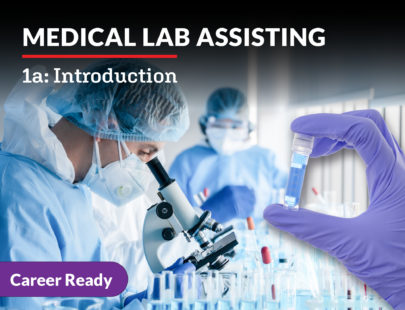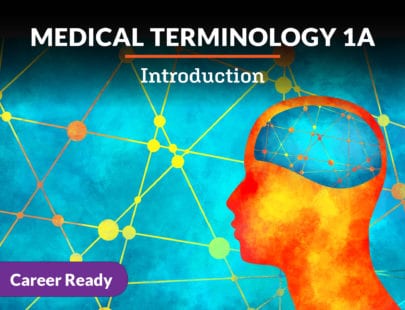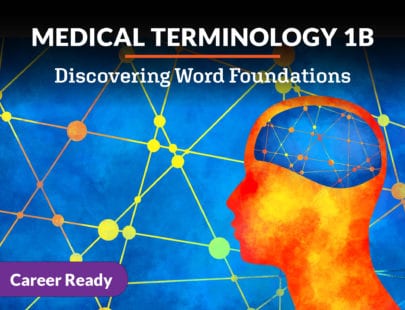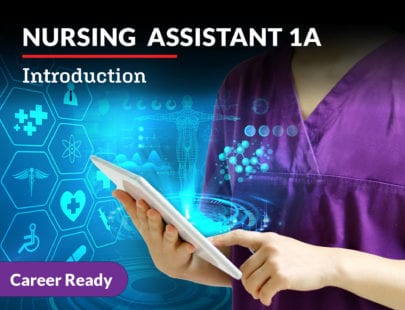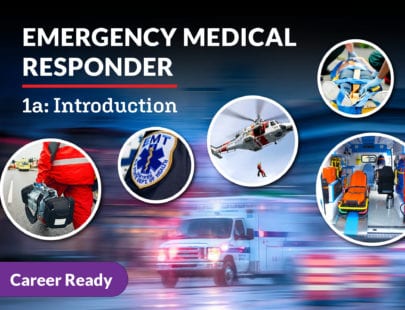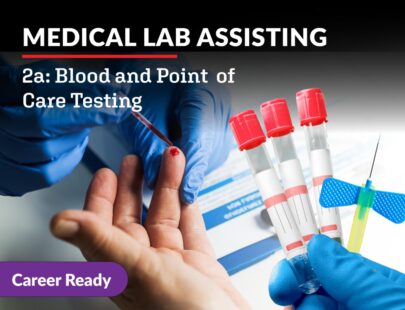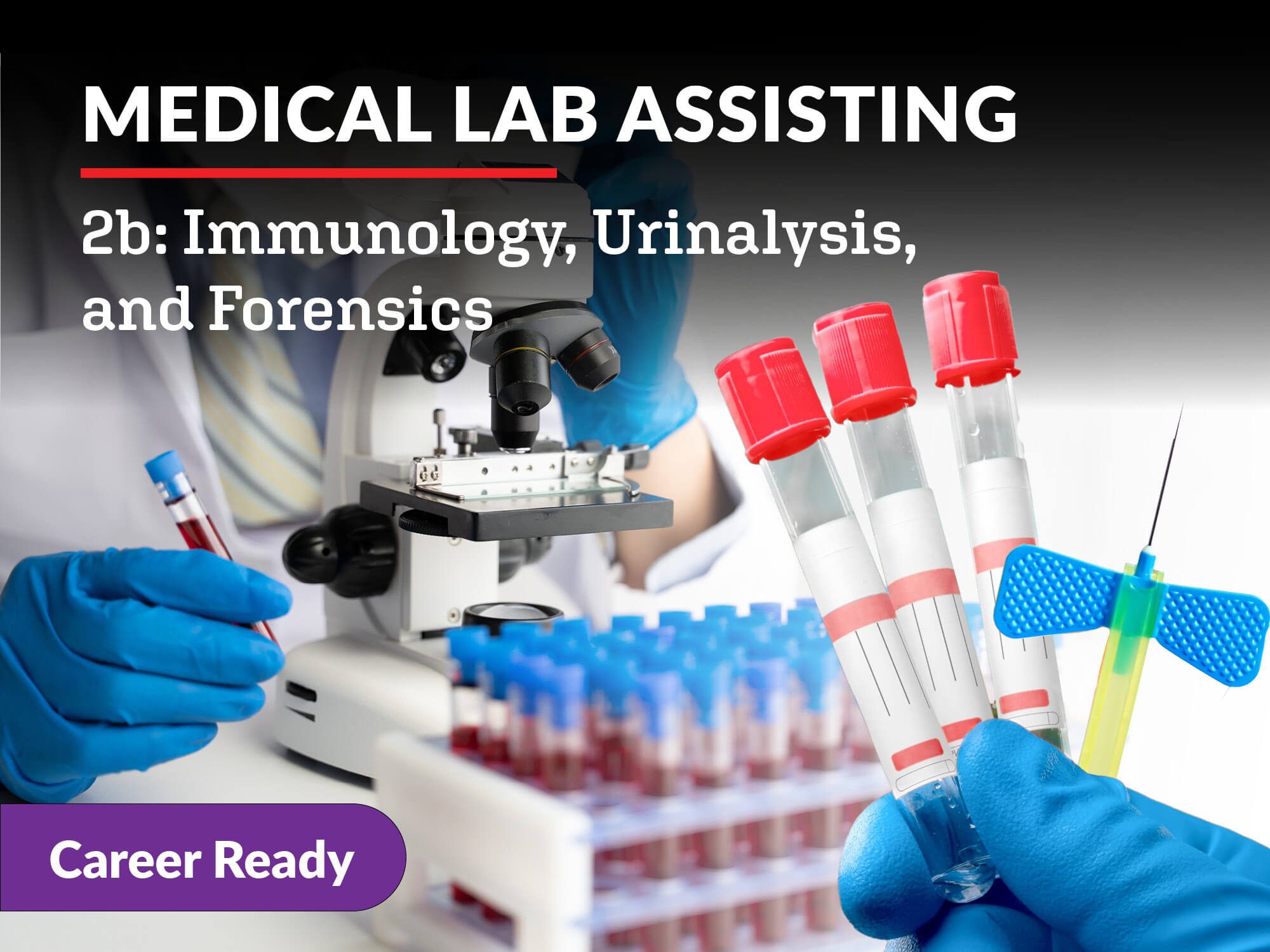
Medical Lab Assisting 2b: Immunology, Urinalysis, and Forensics
You have learned so much about the critical role a medical lab assistant plays, but you’re not done yet! In this course, you will build on your knowledge of techniques and testing and deepen your understanding of physiology and disease. You’ll further explore the immune system and immunology, advanced specimen collection methods, antigens and antibodies, and you’ll even dip into forensics. You will also learn coding essentials and the ins and outs of an effective, ethical medical lab. Let’s continue examining the details of your future career and workplace!
Units at a Glance
Unit 1: CLIA and Laboratory Regulations
On Monday you fill your tank with gasoline from Alpha’s gas station. On Friday, you go to Bravo’s gas station, pay the same as at Alpha’s station for the same amount, but find out that the gasoline was watered down! Is it fair to get a lower-quality product simply because you went somewhere different to get it? Certain products and services are regulated and monitored to protect the consumer, including the tests performed in labs. CLIA ensures you get the same quality of testing, regardless of where it is done.
What will you learn in this unit?
- Detail the criteria and process of the creation of a CLIA-approved test
- Identify the CLIA-required qualifications and duties of laboratory personnel
- Summarize the CLIA certification application process and lab requirements
- Describe elements within state statutes, CLIA, and alternative site testing
Unit 2: Immunology Principles
On the second day of the dig, the archeologist discovered a fossilized footprint buried in the earth. This remnant is an imprint, an impression of events that took place in this region long ago. Just like footprints from earlier eras, antibodies are holdovers from previous days. Our immune system keeps its own archeological record of its experiences. Through study, you can learn the secrets of the past and gain insight into the processes of the immune system.
What will you learn in this unit?
- Summarize immune elements and the process of making antibodies
- Detail the types of classes of antibodies and hypersensitivity reactions
- Describe immune responses and the three complement pathways
- Identify the methods of antibody purification and zones of a lateral flow assay
Unit 3: Immunology and Pathogens
Before you is a pile of salt. It is possible that a single grain of sugar is mixed in somewhere among these tiny salt particles; you need to determine if it is actually there. As impossible as this task sounds, it is similar to the serological testing the medical laboratory performs every day. By knowing the chemical properties and behaviors of molecules, testing becomes not only possible but reliable. Are you ready to learn some sweet detection techniques?
What will you learn in this unit?
- Summarize the steps of rapid testing techniques for syphilis
- Describe microhemagglutination and particle and heterophile agglutination
- Detail the function of fluorophores and hybridization techniques
- Identify aspects of proper patient communication and nucleic acid testing
Unit 4: Immunology and Autoimmune Conditions
A scientist has dug up a tool of unknown origin or purpose. Through rigorous work and effort, much is learned of this tool, which was once seen only as a relic from a previous time. Now it can be used to understand additional mysteries. Antibodies were once seen as just the artifacts of previous infections, but today, modern-day immunologists use them as tools to explore physiology in real-time. In this unit, you will learn how medical laboratory testing has adapted to use antibodies as a means to detect body functions. Time to start digging!
What will you learn in this unit?
- Explain rheumatoid factor and rheumatoid arthritis and their testing methods
- Describe CCP, thyroid antibodies, and immunofluorescence testing
- Summarize the steps of performing ELISA testing
- Identify common autoimmune conditions and complications in testing
Unit 5: Urinalysis Physical and Chemical Testing
Many cultures around the world study balancing forces. What is the day without the night? What is light without the dark? Each is separate but is still part of the other. In the culture of the medical laboratory, blood and urine share such a balanced relationship. Studying how these two substances are interconnected will deepen your understanding of how the body works.
What will you learn in this unit?
- Identify the physical and chemical properties of urine
- Detail the techniques of physical, chemical, and automated urinalysis
- Explain the physiological processes of renal filtration, reabsorption, and excretion
- Summarize the clinical correlations between urinalysis results and diseases
Unit 6: Urine Specimens and Microscopic Analysis
After years of travel, space colonists have just landed on an alien planet. There is evidence that this planet has water. If it does, they must test it; what it contains could mean life or death. Water contains secrets we cannot see with the naked eye. Just like water on a distant planet, urine may contain microscopic substances and organisms that can reveal the health of humans. Time to suit up and explore the hidden world of microscopic urinalysis!
What will you learn in this unit?
- Summarize the purpose and techniques of nonsterile urine specimens
- Detail sterile collection techniques, documentation, and labeling of urine specimen
- Describe the steps in urine preservation and preparation for microscopic analysis
- Identify the microscopic substances within urine and their clinical significance
Unit 7: Medical Laboratory Forensics
Flashing police lights, yellow police tape, and uniformed investigators surround a dark corner at the end of town. A crime was committed here. What happened? Who was involved? Crime scenes are mysteries filled with potential clues. A single drop of blood may be the key to solving a case. Are you ready to join in the investigation?
What will you learn in this unit?
- Summarize the purpose of forensics and the types of autopsies
- Explain how autopsy specimens can elucidate the factors involved in a death
- Identify the skeletal features used by forensics for identification
- Describe the types of teeth and their value in forensic analysis
- Narrate the process of gel electrophoresis and DNA profiling
- Contrast DNA sequencing to DNA profiling in process and application
Unit 8: Medical Laboratory Office Administration
Mage the Magician is famous for performing amazing feats that astonish and amaze audiences of all ages. Tonight, you sit in the darkness of the theatre anticipating the wonders you will soon see, but something is off. There nothing for Mage to pull from the hat; where is the rabbit? The often-unsung heroes of any operation are those in charge of logistics. In fact, knowledge of ordering, billing, and organizing are essential to performance of any job, whether working with rabbits or reagents!
What will you learn in this unit?
- Summarize the role of medical coding in health care
- Explain the purpose of CPT and HCPCS codes
- Interpret the concept of medical necessity and its role in Medicare
- Identify parts of Medicare and common laboratory screening tests
- Describe the logistical and ethical features of effective medical labs
Required Materials
Coming Soon!
